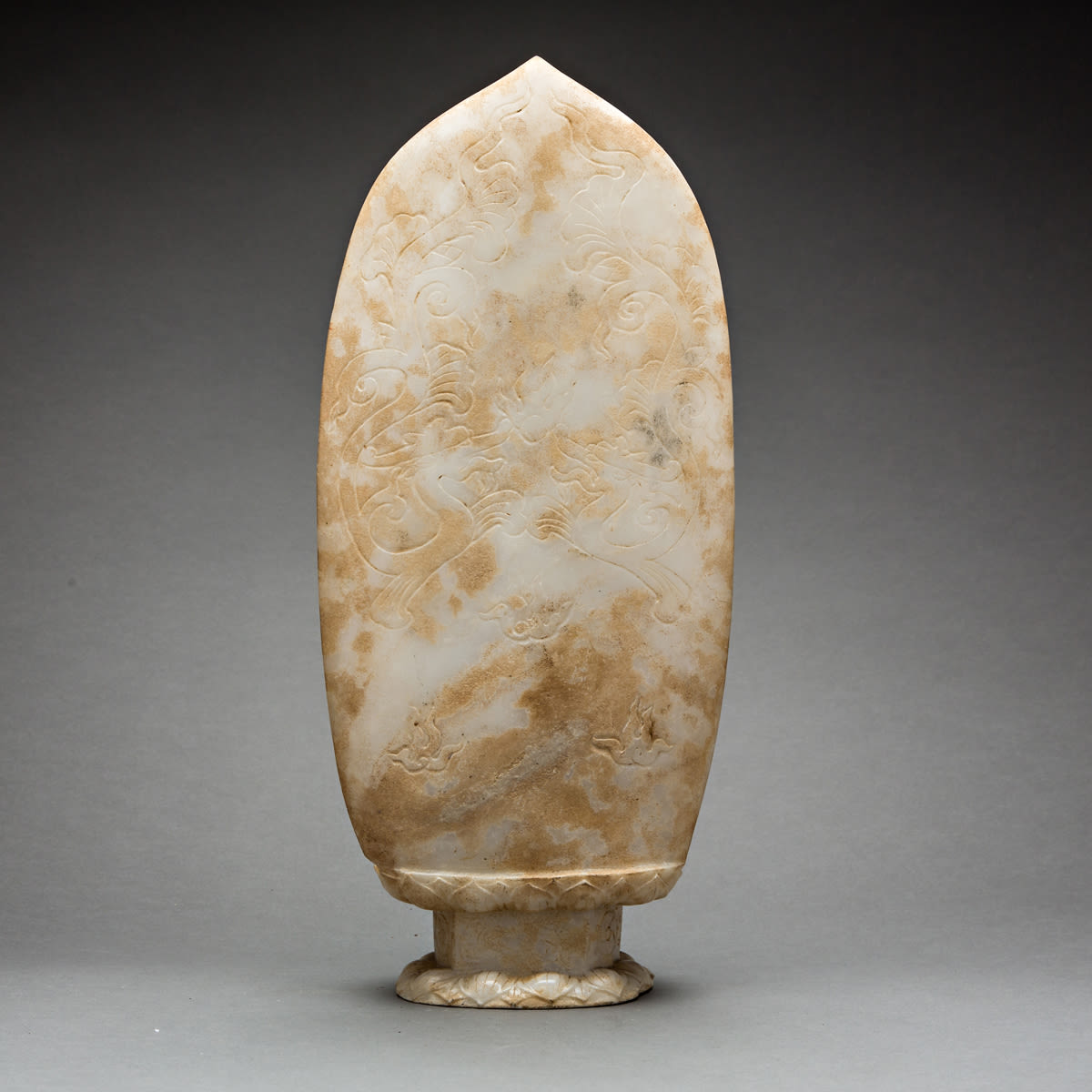Qing Marble Buddha, 18th Century CE - 19th Century CE
Marble
43.8 x 20.3 cm
17 1/4 x 8 in
17 1/4 x 8 in
LF.004
Further images
The M’ing, founded in 1368 under the peasant emperor Hong Wu, was a militarily oriented socio-political entity much given to radical interpretations of Confucianism and with a very strong defensive...
The M’ing, founded in 1368 under the peasant emperor Hong Wu, was a militarily oriented socio-political entity much given to radical interpretations of Confucianism and with a very strong defensive ethos (the Great Wall dates to this period). However by the 17th century cracks had started to appear, young male heirs being manipulated as puppets by the ruling families, and the court became rotten with intrigue. To compound matters, the Manchurian Chinese cities were being attacked by local groups – dubbed the Manchus – who eventually invaded China and deposed the old regime. The last M’ing emperor, Chongzhen, hanged himself on Coal Hill overlooking the Forbidden City, bringing an end to his line and ushering in the Q’ing Dynasty.
The Q’ing had been founded by Nurhaci in the early 17th century, and persisted until the collapse of imperial China in 1912 with the hapless Pu-Yi, the last emperor of China. Their isolationist policies, social control (all men required to shave their heads, wear queues, and wear Manchu rather than traditional Chinese dress) introspection and cultural conservatism was at odds with their liberality in certain social issues – such as forbidding the binding of women’s feet (later withdrawn due to social pressure from the populace). However, this cultural inflexibility – which grew as the emperors grew increasingly unaware of the world outside their palace walls, much less the country’s borders – was a difficult stance to maintain in the shadow of the European thalassocracies, and it may have been this which helped hasten the demise of the Imperial system.
This type of standing Buddha is commonly referred to as the “walking Buddha.” Apparently, this posture originated in Thailand and appears to illustrate certain texts that were recorded during the Sukhothai period. Specifically, this form seems to relate to the Buddha as described in canons written during the reign of Ramkhamheng in the late 13th Century. In the city of Sukhothai, representations of the walking Buddha were found placed against the walls of temples. Overtime, this pose spread throughout the region and eventually made its way into China. One hand is traditionally held in the Abhaya mudra, which symbolizes protection, benevolence, and peace, while the other arm hangs beside the body. Sometimes, one leg is portrayed advancing forwards of the other, contributing to the designation of these figures as walking. This Buddha reveals by the time of the Qing Dynasty, this pose had been fully absorbed into the Chinese cannon, for while the pose remains similar to early Sukhothai examples, the rest of the carving, including the drapery and facial features, are distinctively Chinese.
The Q’ing had been founded by Nurhaci in the early 17th century, and persisted until the collapse of imperial China in 1912 with the hapless Pu-Yi, the last emperor of China. Their isolationist policies, social control (all men required to shave their heads, wear queues, and wear Manchu rather than traditional Chinese dress) introspection and cultural conservatism was at odds with their liberality in certain social issues – such as forbidding the binding of women’s feet (later withdrawn due to social pressure from the populace). However, this cultural inflexibility – which grew as the emperors grew increasingly unaware of the world outside their palace walls, much less the country’s borders – was a difficult stance to maintain in the shadow of the European thalassocracies, and it may have been this which helped hasten the demise of the Imperial system.
This type of standing Buddha is commonly referred to as the “walking Buddha.” Apparently, this posture originated in Thailand and appears to illustrate certain texts that were recorded during the Sukhothai period. Specifically, this form seems to relate to the Buddha as described in canons written during the reign of Ramkhamheng in the late 13th Century. In the city of Sukhothai, representations of the walking Buddha were found placed against the walls of temples. Overtime, this pose spread throughout the region and eventually made its way into China. One hand is traditionally held in the Abhaya mudra, which symbolizes protection, benevolence, and peace, while the other arm hangs beside the body. Sometimes, one leg is portrayed advancing forwards of the other, contributing to the designation of these figures as walking. This Buddha reveals by the time of the Qing Dynasty, this pose had been fully absorbed into the Chinese cannon, for while the pose remains similar to early Sukhothai examples, the rest of the carving, including the drapery and facial features, are distinctively Chinese.







